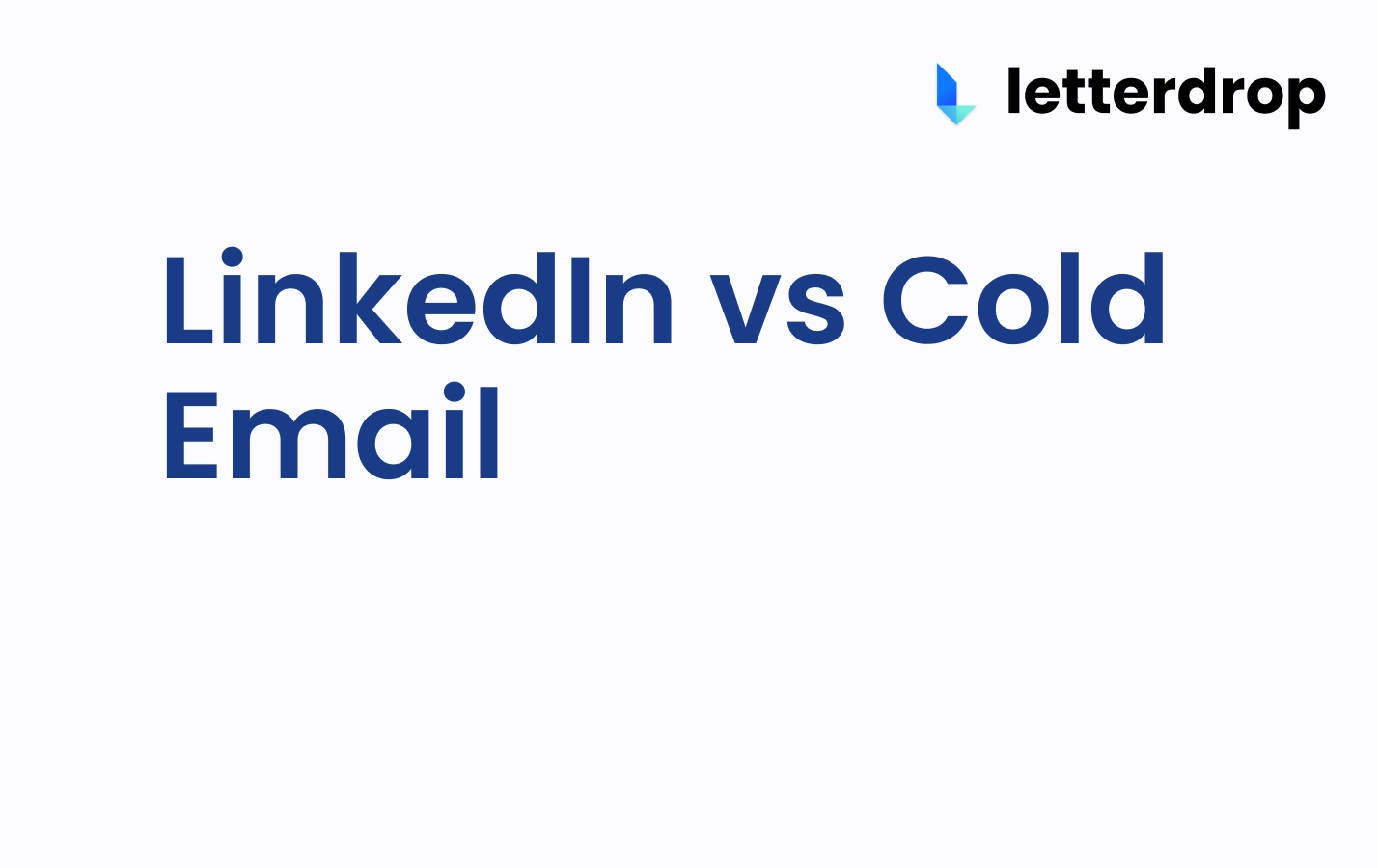How to Follow Up on LinkedIn Engagement
TL;DR:
- Following up with engaged accounts on LinkedIn can yield a high reply rate.
- Track engagement on LinkedIn through native tools.
- Nurture first-party engagement by providing value before making an ask.
- Engage with prospects discussing problems you solve and offer tailored solutions.
- Personalize outreach, act quickly, and be persistent but respectful in turning engagement into meetings.
If you follow up with engaged accounts on LinkedIn, you're following up with the potential 3-4% of folks in-market. It's important that you don't pitch slap, but offer genuine value before making an ask.
As for the impact of reaching out to engaged prospects, we've seen north of 30% reply rate.
When it comes to following up with these engaged accounts, you need to separate them into three buckets.
- First party intent, or engagement on your company content
- Engagement with relevant influencer or competitor posts that cover the problem you solve
- Their own posts relating to a problem you solve
How Do You Track Engagement on LinkedIn?
You can do this natively in LinkedIn:
- Click on the "Me" icon at the top of your LinkedIn homepage.
- Under "Manage," select "Posts & Activity."
- Choose either the "Articles" or "Posts" tab, depending on the content you want to track.
- Click on the number of impressions in the lower-left corner or select "View analytics" in the lower-right corner of your post or article.

First-Party Engagement: Nurture, Don’t Pitch-Slap
First-party engagement refers to when someone interacts with your own content or your team’s posts.
This is the most direct type of engagement because the prospect has already shown interest in what you have to say.
It's so important that you don't pitch immediately when you get this kind of signal.
As our AE, Ryan, explains:
“You’ve already built all this trust by posting content. You don’t want to ruin it by pitch-slapping. I prefer to add value first and earn the right to make an ask later.”
We have some LinkedIn prospecting templates for sales, if you're interested.
Here’s how Ryan follows up with first-party engagement and gets upwards of 30% reply rate:
- Send a Blank Connection Request: If they aren’t already connected, reach out within 24 hours to maximize momentum. Ryan notes that the acceptance rates for these requests are typically over 90%, especially when they’ve already liked your post.
- Provide Value-First Messaging: Instead of pushing for a meeting right away, Ryan suggests sending a message like:
"Hey [Name], I saw that my post on social selling seemed to resonate with you. We recently worked with [Client] and created a Playbook on the subject. Thought it might be helpful—here’s the link."
There’s no hard ask here — just a value-driven conversation starter.

Engaging with ICP Posts: When Prospects Are Talking About Problems You Solve
The second bucket focuses on your ICP who are posting about challenges you can help with. This engagement type requires a bit more research, as you’ll need to stay up-to-date with and react to what they’re posting.
For example, we look for posts where our ICP discusses topics like social selling, LinkedIn DMs, or organic outreach, and use these posts as an entry point for outreach.
This follow-up would look a bit more tailored:
- Comment and Engage with Their Posts: By showing genuine interest in their content, you build rapport. Commenting thoughtfully can signal that you are aligned with their pain points.
- Send a Direct Message Based on Their Post: If the post is relevant to what you do, reach out with insights or solutions that relate directly to the issues they’re discussing.
As Ryan explains,
“I’ll send a message within 24 hours, adding value by sharing a resource or insight that aligns with the pain points they’ve mentioned in their post. This keeps the conversation focused on them.”
Once again, this kind of personalized help stands you in much better stead than a generic pitch.
Engaging with Accounts that Interact with Related Content
The third type of engagement focuses on people who interact with posts about problems you solve, but from influencers, competitors, or thought leaders rather than your content.
Though they aren't engaging directly with you, their engagement shows they might share your views on solving key challenges. In this sense, the post offers an opportunity for common ground.
You might send them a message like:
“Hey [Name], I noticed you liked [Influencer’s] post about LinkedIn outreach. We’ve been experimenting with similar strategies and found [X insight] to be particularly helpful. Here's a resource we had, thought you might find it useful."
Here, the aim is to acknowledge their engagement and offer something that aligns with the post they’ve interacted with, making the message feel relevant rather than salesy.
Best Practices for Turning Engagement Into Meetings
Your ability to personalize outreach and do so while the post in question is top-of-mind determines your level of success.
Here are some best practices:
- Act Quickly: Whether it’s a comment, like, or DM, following up quickly allows you to "strike while the iron is hot". The prospect probably won't remember what they liked a week ago.
- Personalize Your Approach: Voice notes and videos are highly effective. If a prospect doesn’t respond to your first message, try following up with a voice note or short video to keep the interaction feeling human and less scripted.
- Be Persistent (But Not Pushy): If after two follow-ups (text, voice note, or video) you still haven’t heard back, send a final message that’s personalized based on your research. Ryan advises framing it like this:
“If you’re not the best person to chat about [X], I’m happy to connect with someone else on your team who might be. Let me know!”
This polite nudge shows persistence but remains respectful of their time.
Final Thoughts: Timely, Personalized Outreach to Warm Accounts Is Key
By focusing on adding value first and engaging with prospects on a personal level, you can build relationships that ultimately drive pipeline growth.
If you're looking to streamline your prospecting on LinkedIn, reach out to us.
Subscribe to newsletter
No-BS GTM strategies to build more pipeline in your inbox every week
Related Reading
Some other posts you might find helpful
















